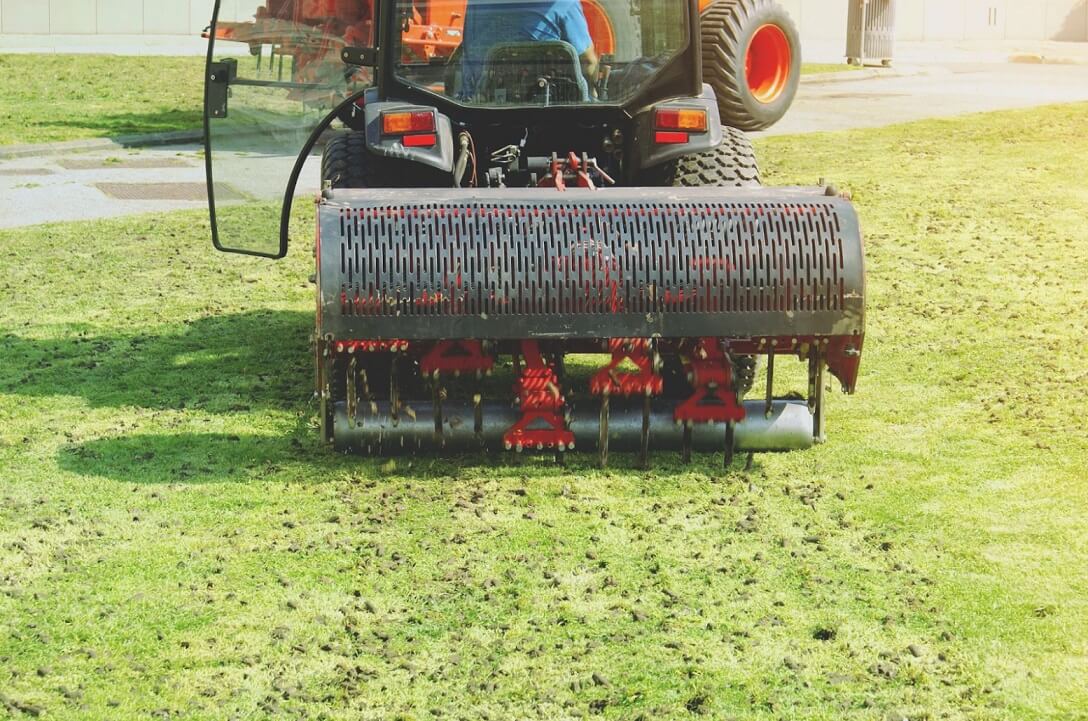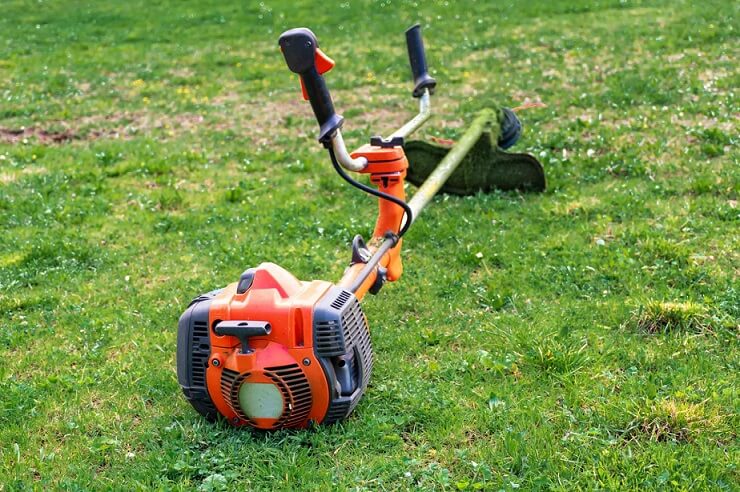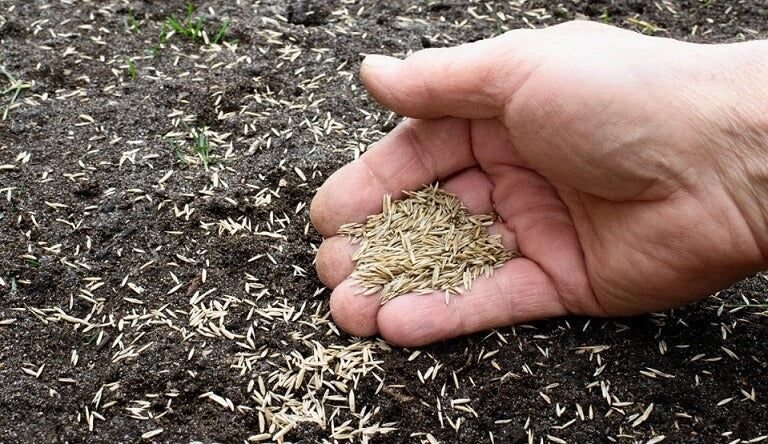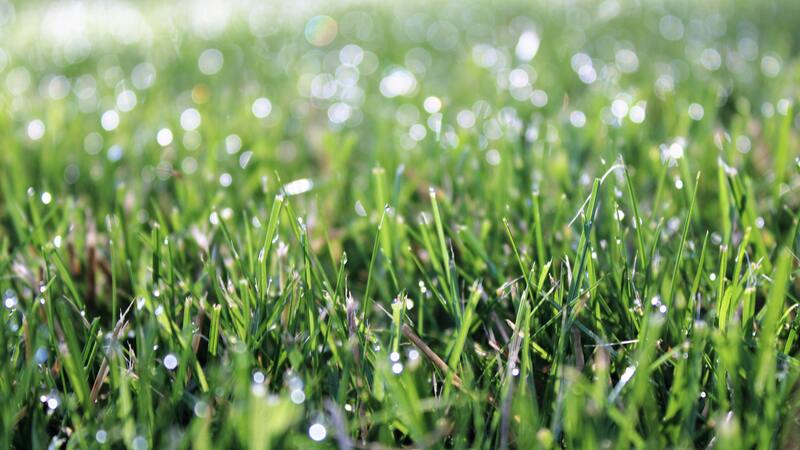You spread grass seed evenly and waited for a lush green lawn, but witnessed patchy sprouts. This usually happens not because the seed was poor, but because the soil surface dried out at the wrong time.
If a seed once looked promising but failed to establish, watering habits were likely the defining factor. Grass seed actually needs steady moisture to germinate, and even short dry periods can stop growth before it begins.
This guide explains how often to water grass seed at each growth stage. It shows how weather, soil type, slope, and sunlight affect watering frequency, and suggests the best schedules for watering grass seed.
Grass Seed Watering Requirements by Growth Stage
Turning a seed into grass is a proper project with clear variables and actions that change step by step. Each phase has different moisture needs, and the soil surface reacts differently as roots begin to form.
If the watering pattern does not match the growth stage, the seed may dry out earlier. Here is how the schedule progresses and water requirements change:
First Watering (Pre-Germination)
Watering needs to begin long before the seed is even placed on the ground. The objective is to prepare the soil so it can hold moisture without forming puddles. Experts recommend watering the soil several days ahead of seeding, long enough for moisture to penetrate 6 to 8 inches deep.
Once the soil is pre-moistened, spread the seed evenly, then rake lightly or add a thin top layer of compost or straw. Switch to gentle watering. Instead of long sessions, use short ones, around 5 to 10 minutes, 2 to 4 times a day.
Yes, this stage requires more water, but you don’t have to soak the soil. If the surface becomes muddy or shiny with standing water, roots will have difficulty attaching, and seeds may wash or clump.

During Germination (Days 1 to 14)
Germination begins once the seed absorbs water. Inside, the seed coat softens, and the first root (the radicle) starts to break out. At this stage, even a short period of dryness can stop growth completely.
During these 1 to 2 weeks:
- Continue frequent watering, 2 to 4 times per day.
- Keep the surface consistently moist, but never waterlogged.
- Avoid watering late at night to reduce fungal risk.
At this stage, the amount of water needed is small, often around ⅛ to ¼ inch per day.
Now, if the weather is hot or windy, add one more short watering session to compensate for the evaporation loss. And it is cool and cloudy, reduce frequency slightly, but do not let the surface dry out.
Early Sprouting and Rooting (Weeks 2 to 4)
Once the seeds sprout, the grass blades start to appear above the soil. During this phase, the plant is developing its first real roots. These roots are still weak and shallow, so the soil surface still needs to stay moist, but now the goal is to let them reach slightly deeper levels.
Start reducing how often you water, but increase the length of each watering session. A good pattern is:
- 1 to 2 watering sessions per day
- 10 to 20 minutes per session, depending on soil type and weather. The soil should stay damp to a depth of about 2 to 3 inches.

Transition Phase (After 4 Weeks)
By week 4, the grass has a small but more stable root system. This is when you can begin shifting from seedling care to a normal lawn care routine.
Reduce watering frequency to every other day, and let each session run longer, usually 20 to 40 minutes, to soak the soil more deeply. Beyond week 6 and onward, follow the standard watering frequency:
- 1 to 1.5 inches of water per week
- 1 to 3 deeper sessions (up to 30 minutes) rather than many short ones

Best Time to Water Grass Seed
We have already covered how watering needs change at each growth stage, but timing also matters. That leads us to the question we have been asked multiple times: when to water? Morning, afternoon, evening, or night?
The best time to water grass seed is in the early morning. Ideally, between 6 a.m. and 10 a.m. At this time, the air is cooler, the sun is not yet strong, and the soil has time to absorb moisture before the heat of the day.
For the second/third watering session during early growth, late afternoon can work as long as the grass has enough daylight remaining to dry slightly before nightfall. Midday and late night are not recommended for watering the grass.

Effect of Different Conditions on Watering Schedule
Watering is not one-size-fits-all. Several outside factors force adjustments to how often and how deeply you water. The main ones are
Weather
Hot, dry, windy days increase evaporation from the soil surface. When the air pulls moisture away quickly, the soil dries out faster than on cool days.
On the other hand, cooler temperatures and rain reduce the need for frequent watering. You must monitor the forecast and reduce watering when natural precipitation is already retaining moisture.
Soil Type
The makeup of your soil dramatically affects how it retains and absorbs water.
- Sandy soils drain quickly and offer little water-holding capacity. You will need more frequent and shorter watering to keep moisture at the surface.
- Clay soils hold water for longer, but risk runoff or waterlogging if you apply water too fast or too often. Slower, deeper watering and water amendments with organic matter are required for such soils.
- Loam (balanced soil) is the ideal soil and gives the most consistent performance with a regular watering schedule.

Lawn Slope
If your lawn is on a slope, water applied at the top may run downhill before soaking in. That means the upper area dries out, and the lower area may end up soggy.
The best practice is to adopt a “cycle and soak” watering strategy: apply water, let it soak, then apply again. This reduces runoff and improves absorption.
Sun Exposure
Remember, sections of lawn in full sun lose moisture faster than shaded ones. And South- or west-facing lawns often dry out quicker.
Conversely, shaded areas retain moisture longer and may need less frequent watering. When you treat the whole lawn the same, you risk overwatering the shaded spots and underwatering the sunny ones.
Watering Differences for Overseeding, Reseeding, and New Lawns
Planting new seeds can happen for different reasons. You may be thickening an old lawn, filling bare patches, or growing a full lawn from scratch. Each case needs a slightly different watering approach.
Overseeding
Overseeding means adding new seed on top of grass that is already growing. Here, the challenge is to keep the new seed moist without overwatering the established turf.
Use the following pattern:
- Water twice a day for 5 to 10 minutes to keep the surface moist for germination.
- Once a week, apply a deeper watering to support the root system of the established lawn.

Reseeding Bare Patches
Bare spots are small areas where grass has died or thinned. The surrounding lawn may be mature and well-rooted, so one part of the lawn has different needs than the rest.
Use a split approach:
- Water the entire lawn as normal, about 1 to 1.5 inches of water per week.
- Water the patches more frequently. Apply moisture 2 to 4 times a day in light amounts until germination occurs.
- Gradually reduce the frequency so the roots grow deeper.
Seeding a New Lawn
When seeding a full lawn from scratch, there are no established roots to rely on. Every seed depends entirely on surface moisture.
You’ll have to follow the variable schedule in the growth stages: pre-germination, germination, and early sprouting.
- For 1 to 2 weeks, water 2 to 4 times daily in short sessions.
- Once sprouts appear, reduce frequency and water slightly deeper.
- After about 4 weeks, shift to fewer, deeper waterings.
- By 6 to 8 weeks, move to a regular lawn schedule (1 to 1.5 inches per week).
Top Watering Practices for Best Results
Lastly, we have added a few practical methods that add extra protection and help the new grass settle in smoothly.
Watering at the Right Time
Always start with a morning watering to give the soil time to absorb moisture before the day heats up. If a second session is needed, keep it in the late afternoon while leaving enough daylight for the surface to dry.
Adapting to Environmental Conditions
Adjust your watering schedule as per local conditions, instead of following a fixed routine. Increase frequency during heat, wind, or sandy soil. Reduce it during cool weather or when rain helps maintain moisture.
Consistent Schedule
Grass seed fails when the soil dries out, even if that happens once during early growth. So, keep moisture steady day by day, and make changes gradually as the roots grow deeper.
Conclusion
A healthy lawn depends on those first weeks of careful watering. Keep the soil evenly moist, adapt to weather changes, and shift to deeper watering as the roots grow. Once established, your lawn will only need regular mowing to stay green and even.
If you want that mowing to stay consistent without the weekly effort, consider using a robotic lawn mower. Browse our robotic lawn mower range to see what fits your lawn best.
FAQs
How often should I water new grass seed in the fall?
Normally, we recommend 2 to 4 light waterings a day for new seed, but in the fall, the low temperatures slow evaporation. So two short sessions per day are usually enough. You can reduce frequency further once the sprouts start to establish.
How often to water grass seed in summer
Summer heat increases evaporation, causing the soil to dry quickly. Short 2 to 4 watering sessions a day work best. Spread these around the morning and late afternoon so the soil stays moist without overheating.
When to stop watering new grass seed?
Stop frequent light watering once the grass reaches about 2 to 3 inches tall and has formed early roots. At that point, transition to less frequent watering, similar to a regular lawn schedule.
More Blog
Should You Aerate Your Lawn in Spring
Planning to aerate your lawn this season, but unsure because of the mixed views on spring aeration? Many homeowners face the same confusion. Some say spring works fine, while others warn against it, which makes the decision harder than it...
Should I Cut Grass Short for Winter: The Expert Tips 2025
As winter approaches, many homeowners begin to wonder about the best practices for maintaining their lawns. One common question that arises is whether to cut the grass short before the cold weather sets in. Well, the answer may vary due...
How Long to Water New Grass Seed
Planted or planning to plant new seeds? You might have heard that new grass needs more care and water than an established lawn. The most common confusion is how long to water it so it grows well. Your concern makes...
When to Stop Mowing Your Lawn Before Winter?
As the weather gets colder, it’s time to prepare for the long winter season. While you’re preparing a good stock of food and remedies and weather-proofing your pets, don’t forget to adjust your lawn care routine, including when to stop...
How Often to Water Grass Seed?
You spread grass seed evenly and waited for a lush green lawn, but witnessed patchy sprouts. This usually happens not because the seed was poor, but because the soil surface dried out at the wrong time. If a seed once...
Can You Cut Wet Grass? Is it Safe?
Beginners and new lawn owners often ask if they can cut wet grass. It’s something that confuses many people, and yet, they are unable to decide. But not after reading this article. We will help you understand the issues of...






Share: